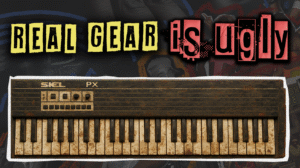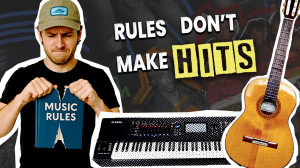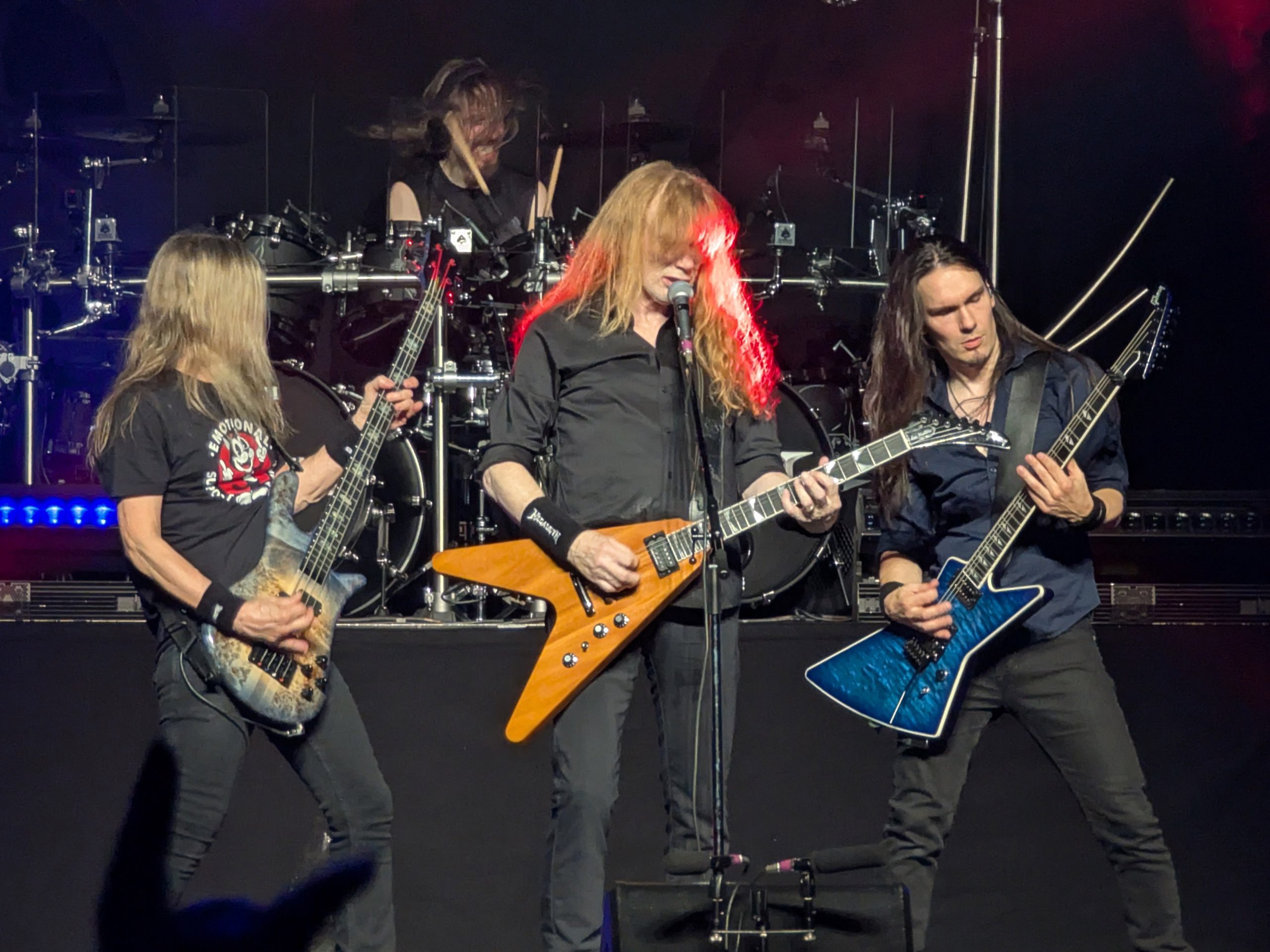
Guitar culture rewards the flashy and expensive while relegating accessories to footnote status. The specialized tools that transform playing experience live in the shadows of custom shop instruments and boutique amplifiers, despite their outsized impact on sound and technique.
These essential pieces of gear are the true equalizers in musical creation.
This content may contain affiliate links. If you wish to support us and use these links to buy something, we may earn a commission.
17. Tunerette Tuner

Most tuner designs scream “serious musician at work,”—exactly what destroys the mystique when you’re trying to dial in your sound at a crowded venue. The Tunerette Tuner subverts that expectation entirely. This clip-on looks like something Keith Richards would keep behind his ear, yet it delivers accuracy that rivals pedals three times its size. The digital display cuts through dim lighting like headlights through night fog.
Always tune up to pitch, never down—advice that applies equally to people learning to tune a guitar and navigating life’s obstacles. While mainstream manufacturers push ever-larger displays and unnecessary features, this tuner’s discreet profile serves as a rebellion against gear that screams for attention. Its precise functionality makes a statement that technical excellence need not announce itself with neon lights and corporate logos.
16. Guitar Pick Holder

The pick—that small piece of plastic separating fingers from strings—disappears with the determined randomness of socks in laundry cycles. The Guitar Pick Holder solves this universal frustration with elegant simplicity. This tiny accessory mounts directly on your instrument, creating a home base for the most frequently lost item in music history, ranking just ahead of royalty payments and artistic integrity.
What makes this accessory revolutionary isn’t complexity but necessity. Different pick thicknesses fit seamlessly, allowing players to switch between shimmering arpeggios and crushing power chords without missing a beat. The holder transforms from convenience to essential once experienced, joining the pantheon of “how did anyone play without this” gear alongside strap locks and noise suppressors.
15. The Right Guitar Pick

The humble guitar pick represents the most significant tone-shaping decision many guitarists make without realizing it. Professional guitarists consistently emphasize that pick choice significantly impacts tone, according to multiple guitar education platforms and manufacturers like Dunlop and Fender.
Pick materials to tell sonic stories—celluloid creates vintage warmth, while Tortex delivers modern consistency. The thickness spectrum ranges from cloud-light 0.38mm picks that flutter across strings to 2mm behemoths that dig in with unapologetic authority.
The irony stings: guitarists spend thousands chasing tone through exotic woods and handwound pickups while ignoring the first physical connection between player and instrument, where tone begins its journey from intention to sound wave.
14. Fret Wrap

The fret wrap has become a notable point of discussion in guitar technique forums and among professional players. Detractors consider it a shortcut; advocates view it as innovation. This simple band—wrapped around a guitar neck to dampen unwanted string resonance—creates space for precision playing without the background chatter of sympathetic vibrations.
The debate around fret wraps reflects broader conversations about evolving techniques in guitar playing. Technical metal guitarists and recording session players often embrace them for the clarity they provide during complex passages, while traditionalists tend to emphasize unassisted technique.
Progressive players recognize that dampening allows for specific techniques that would be technically challenging without it, particularly for recording environments where string noise becomes more pronounced. The fret wrap doesn’t make playing easier; it makes different playing possible.
13. TC Electronic Aeon String Sustainer
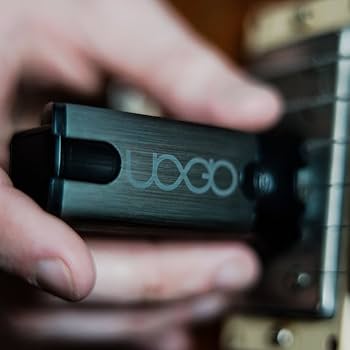
The Aeon String Sustainer challenges conventional notions about what guitars can and should sound like. This handheld electromagnetic device creates infinite sustain without pedals, amps, or effects—like having a violin bow in your pocket. Notes hang in the air with an otherworldly persistence that transforms single-note passages into atmospheric landscapes, expanding the guitar’s vocabulary beyond its traditional constraints.
The sustainer democratizes techniques once reserved for wealthy players with elaborate rigs. Where guitar innovations typically favor technical speed demons or vintage purists, the Aeon serves dreamers and sonic architects building sound cathedrals, note by patient note.
12. Guitar Slide
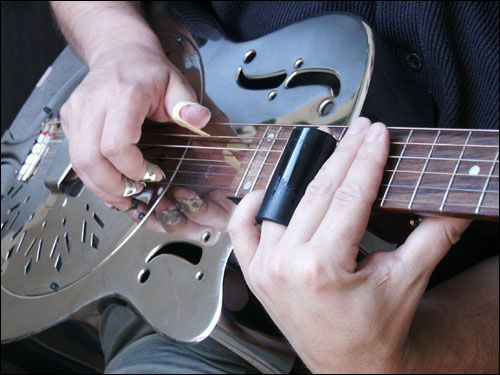
The slide represents blues history in physical form—a direct connection to Depression-era resourcefulness when players used pocket knives, medicine bottles, or broken-off bottlenecks to create haunting, vocal-like tones. Today’s slides maintain that spirit while adding precision craftsmanship.
Glass slides warm the tone like vintage tube amps, while metal cuts through mix density with surgical accuracy. The slide transforms fretboards from rigid grids into landscapes of infinite possibility.
Playing slide requires relearning everything—like switching from English to Spanish mid-conversation. Traditional technique gets abandoned for floating touch and perfect intonation by ear alone. This reinvention demands vulnerability that many technically proficient players avoid.
11. Copper Sound Pedals Flashlight

Stage lighting creates dramatic audience experiences while often leaving performers navigating equipment in near-darkness. The Copper Sound Pedals Flashlight acknowledges this reality with utilitarian brilliance.
Designed in the exact dimensions of a mini guitar pedal, it integrates seamlessly onto pedalboards where real estate remains as precious as downtown parking spots. The magnetic base transforms any metal surface into a mount point for illumination.
What makes this flashlight revolutionary isn’t technical innovation but problem-solving precision. It recognizes that performances happen in environments designed for spectacle, not functionality. The flashlight serves as a reminder that gear should adapt to human needs rather than forcing adaptation.
10. Xvive Wireless Guitar System

The cord connecting guitarists to amplifiers has defined and limited movement for generations—an electronic leash that both powers expression and constrains it. The Xvive Wireless System severes this final physical tether without sacrificing tone.
This transmitter-receiver pair creates invisible connection between instrument and amplifier, expanding stage movement from careful semicircles into boundless exploration with 100-foot range that covers any reasonable performance space.
Freedom from cables challenges core aesthetics of rock performance—no more dramatic cable throws or wrap-around-the-neck guitar heroics. Yet it creates new possibilities for performance that isn’t rooted in 1970s arena rock traditions. The wireless system represents an evolution in thinking about how bodies and instruments interact in performance space.
9. Cloud Jack Cables
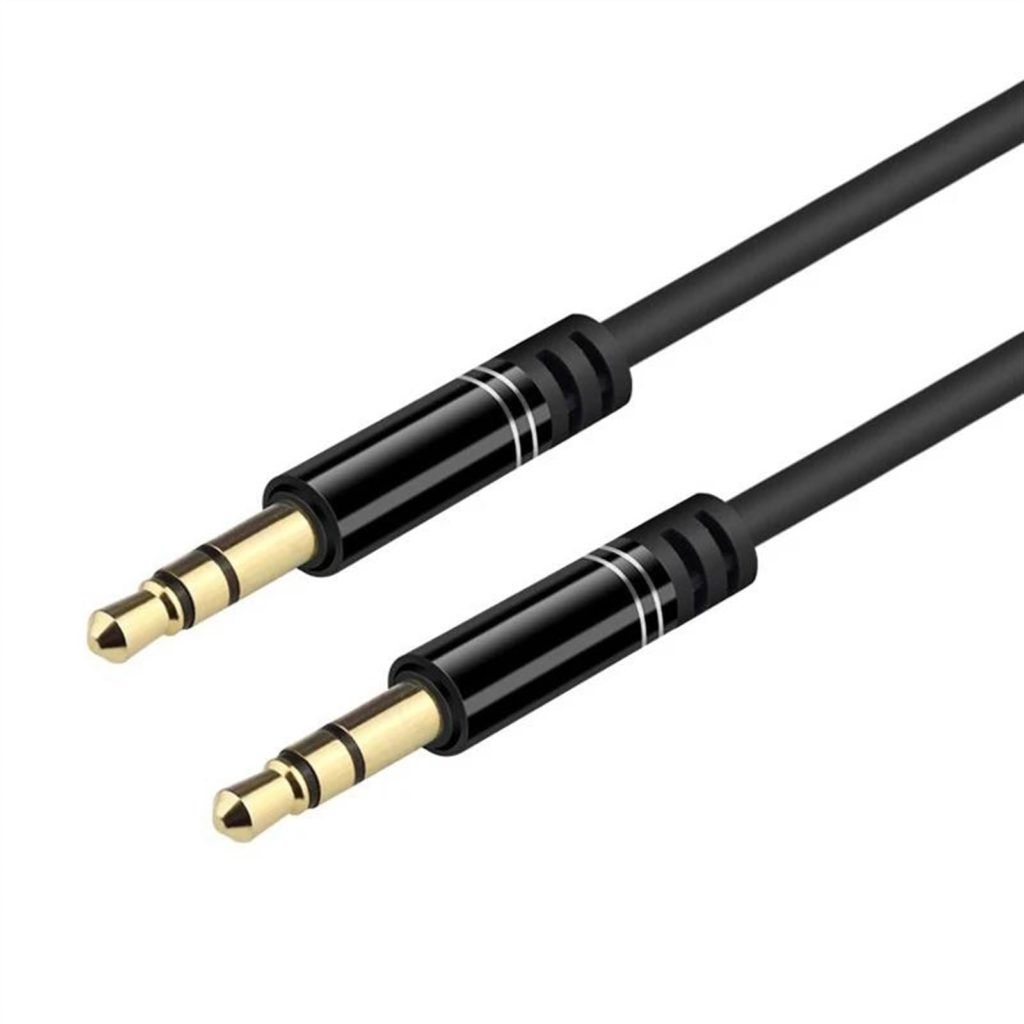
Every guitarist who’s accidentally unplugged mid-performance knows the heart-stopping pop through speakers that sounds like financial damage. Cloud Jack Cables eliminate this persistent threat with noiseless plug technology that functions like an insurance policy for expensive equipment. The internal circuitry gently cuts the signal before disconnection, creating seamless transitions between instruments without cardiac-event-inducing speaker pops.
The psychological benefits exceed even the technical advantages. Playing without fear of equipment damage creates performance comfort that translates directly into musical confidence. While traditional cables turn every quick instrument change into a moment of amplifier roulette, silent plugs eliminate background anxiety that subtly affects performance quality.
These cables shift mental bandwidth from equipment concerns back to musical expression—perhaps the most valuable upgrade any accessory can offer.
8. Shure MV88 Microphone

Smartphones transformed music consumption but failed spectacularly at music documentation with their inadequate built-in microphones. The Shure MV88 bridges this technological gap with studio-quality capture capability that plugs directly into mobile devices like cybernetic enhancement.
This thumb-sized condenser microphone turns every practice space, venue, bathroom, or late-night inspiration session into a potential recording studio with fidelity that represents what happened in the room.
The MV88 enables immediate high-quality documentation of everything from protests to impromptu collaborations with the same device used for social media distribution. This compressed creation-to-sharing pipeline reshapes music discovery, allowing direct access to audiences without traditional gatekeepers determining what deserves documentation.
7. Hercules Guitar Stand

Instrument protection reflects respect for both craft and musical heritage. The Hercules Guitar Stand elevates this protection with engineering that actively prevents disaster rather than passively holding instruments.
The Auto Grab System locks guitars in place automatically, creating security beyond the visual reassurance of typical stands. This stand protects with the vigilance of helicopter parents at a playground—instantly securing instruments against bumps, vibrations, and full-venue catastrophes.
6. Ableton Live DAW

Traditional recording studios maintained control through inaccessible pricing and technical barriers. Ableton Live dismantles this power structure entirely. This digital audio workstation transforms laptops into professional recording environments with capabilities exceeding million-dollar studios from previous decades.
Ableton’s revolutionary approach treats audio as malleable material rather than linear tape. The interface facilitates experimentation that traditional studio environments discouraged through hourly rates and technical complexity. Its intuitive layout makes professional production accessible without engineering degrees, expanding who gets to produce finished music.
5. Guitar Pro Software

Guitar Pro dismantles the mythology that real musicians must transcribe everything by ear alone—a notion that served mainly to restrict musical communities to those with specific training. This notation software allows quick transcription with instant audio verification, making complex music accessible to players developing their listening skills.
The virtual fretboard display translates abstract notation into visual patterns that connect directly with the guitarist’s experience rather than traditional music education.
The software revolutionizes learning by visualizing connections between theory and physical play. Transcription becomes collaborative rather than solitary, with shareable files building community knowledge bases. The program transforms intimidating notation into interactive exploration, allowing transposition, tempo adjustment, and focus on individual parts.
4. Transcribe Program
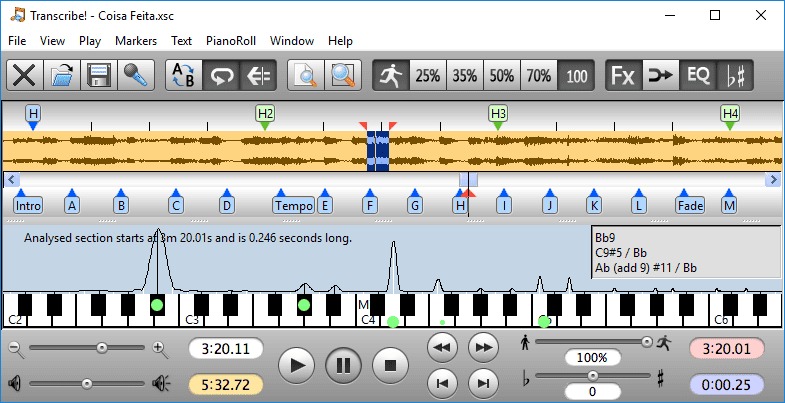
Learning complex guitar parts once required superhuman hearing or endless, frustrating rewinds of cassette tapes. Specialized transcription software eliminates these barriers with audio manipulation that reveals hidden details in recorded music.
Slowing passages without changing pitch exposes the architectural blueprints behind seemingly impossible solos. Looping capabilities transform brief moments into study subjects, allowing deep exploration of techniques that flash by in original recordings.
The program serves as both a microscope and translator—revealing what happened during recording while making it accessible to developing players. This technology challenges notions about natural talent by making methodical study possible for complicated passages once considered unreachable without innate gifts.
3. Kemper Profiler
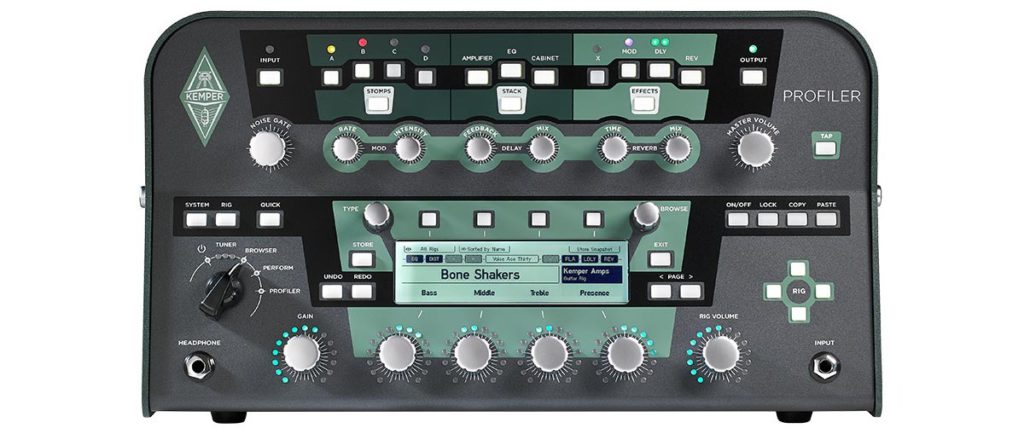
The Kemper Profiler challenges fundamental assumptions about guitar tone and equipment needs. This digital brain captures the essence of any amplifier—from priceless vintage stacks to boutique hand-wired combos—creating perfect replicas that eliminate the need for physical originals. The unit replaces entire collections with algorithms, like having a photograph so detailed it contains the actual light from the original scene.
Traditional amplification required compromises between tone, volume, and practicality. The Kemper eliminates these trade-offs by separating sound from physical limitations. Apartment players access stadium volume tones at conversation levels.
Touring musicians eliminate inconsistent backline worries with profiles of their exact preferred amplifiers. The technology bridges barriers between imagined sounds and practical reality, empowering players to focus on musical expression rather than equipment logistics. The Profiler represents tone democratization—providing access to sounds previously guarded by high prices and rarity.
2. Guitar Tuner

Perfect pitch remains rare, but perfect tuning should be universal. A dedicated guitar tuner provides certainty that influences every aspect of the playing experience. Modern tuners detect pitch fluctuations within cents (hundredths of a semitone), creating accuracy impossible through the ear alone. This precision eliminates the unconscious compensation that occurs when playing slightly out-of-tune instruments—like trying to run on slightly uneven ground.
The psychological impact of accurate tuning extends beyond technical correctness into creative confidence. When every chord rings with mathematical precision, players focus on expression rather than adjustment. The tuner represents musical infrastructure—an unglamorous but essential foundation supporting everything built above it.
Its consistent use separates developing players from advancing ones more reliably than flashy techniques or expensive gear. The humble tuner transforms instruments from approximate sound-makers into precision tools capable of executing musical intentions exactly as conceived.
1. Guitar Care Set
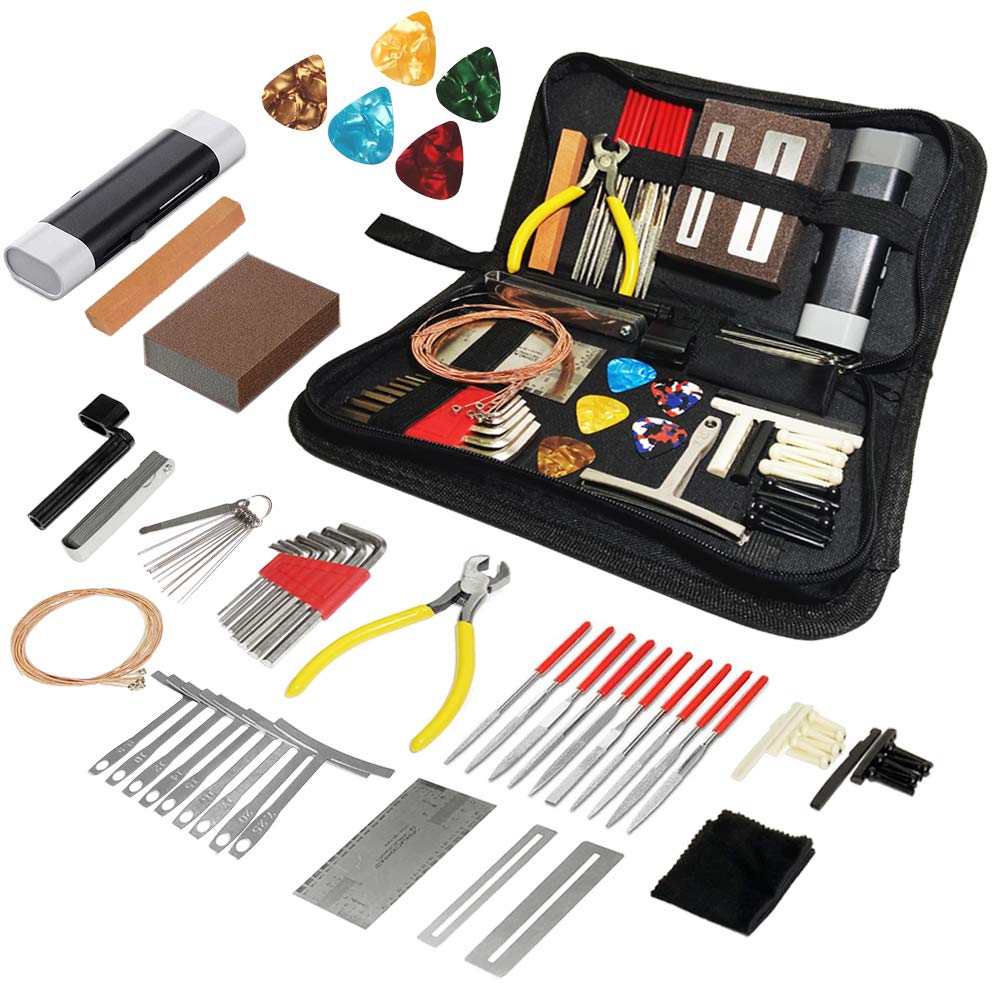
Instrument maintenance represents a relationship rather than a chore. A complete Guitar Care Set acknowledges this connection with specialized solutions for different components.
The three-part system—finish cleaner, all-purpose solution, and wood conditioner—addresses specific material needs rather than treating complex instruments as uniform objects. This systematic approach preserves playability and appearance with the same attention to detail that high-end restaurants give to kitchen maintenance.
Regular cleaning prevents the slow degradation that transforms cherished instruments into compromised tools. Oils, sweat, and environmental buildup gradually change playability and tone changes so incrementally that they often go unnoticed until significant damage occurs.




